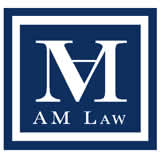Sometimes we find ourselves in a bind financially, and require bankruptcy to resolve our financial worries. When it comes to homeownership, taking on a bankruptcy may seem daunting amidst sorting out how to keep your home while settling your debt. The good news is, that doesn’t mean you have to foreclose your home or lose control over your real estate finances. Homeowners can file Chapter 13 or Chapter 7 bankruptcy to streamline the process of restructuring their mortgage.
Here are some notes for you to consider when modifying your home mortgage through bankruptcy:
Automatic Stay, a Halt in Foreclosure Proceedings:
Once you petition for Chapter 13 bankruptcy, all foreclosure proceedings must stop after your repayment plan for the bankruptcy is approved. The lender, after that point, is legally bound by this plan and cannot continue as long as you are timely with your new payment agreement. However, this option is only available if you have not filed another bankruptcy within the previous two years for the purpose of delaying a foreclosure.
Modification of Mortgages
Filing for a bankruptcy allows the court to manipulate some debts in your favor, as long as the amount owed is greater than the property value. The debt that is equal to the value of the property will remain secured. However, the rest becomes unsecured debt which the law treats as a nonpriority debt; this is to your advantage as you can end up paying less, or none of the debt, under the new repayment plan.
5 Year Limit on Debts
Federal laws limit Chapter 13 bankruptcies to no more than 5 years. For less fortunate individuals who are not able to pay the full debt in 6 years, they may have the entire debt forgiven. As long as they can adhere to the terms of your plan, the lender may discharge the remaining debt after 5 years.
Converting Your Chapter 13 Bankruptcy into a Chapter 7
If you do not qualify for a Chapter 13, a Chapter 7 bankruptcy also discharges certain debts. These types of debts include penalties for missing mortgage payments and late fees. This kind of bankruptcy can also help protect your home from seizure.
Chapter 13 Bankruptcy can help you eliminate payments on your second or third mortgage.
If the value of your home secures your first mortgage, you won’t have any equity in which to acquire later mortgages. In such cases, a bankruptcy court will remove the second and third mortgages and re-categorize them as unsecured debt, which has a low priority.
For Negotiating Mortgage Debt Settlement
During a mortgage settlement, banks tend to request that you pay back the full amount you owe but will offer to lower the interest rate. In many cases, you can get the bank to decrease the total amount that you owe, which can help keep your debt in line with your current home value.
Short sell your home.
For those who decide not to keep their home, a short sale is the best alternative. Short selling is when the bank lets you sell your home for the amount you owe, accepting any proceeds from the sale to satisfy the debt. This option, in the end, forgives the debt for the full amount of the balance.
Reaffirming a Mortgage
Something to look out for if you plan on refinancing bankruptcies through a mortgage: some lenders won’t approve a loan modification unless the borrower signs a contract to reaffirm the debt, which prevents the court from discharging late fees or previously missed payments.
Figuring out the way to manage mortgage debt during a bankruptcy can be overwhelming, and even with these useful tips, it is important to acquire legal advice. For top decision making with a trusted advisor, contact us now so our lawyers can help you arrange a settlement that will work for you.
305-441-9530
